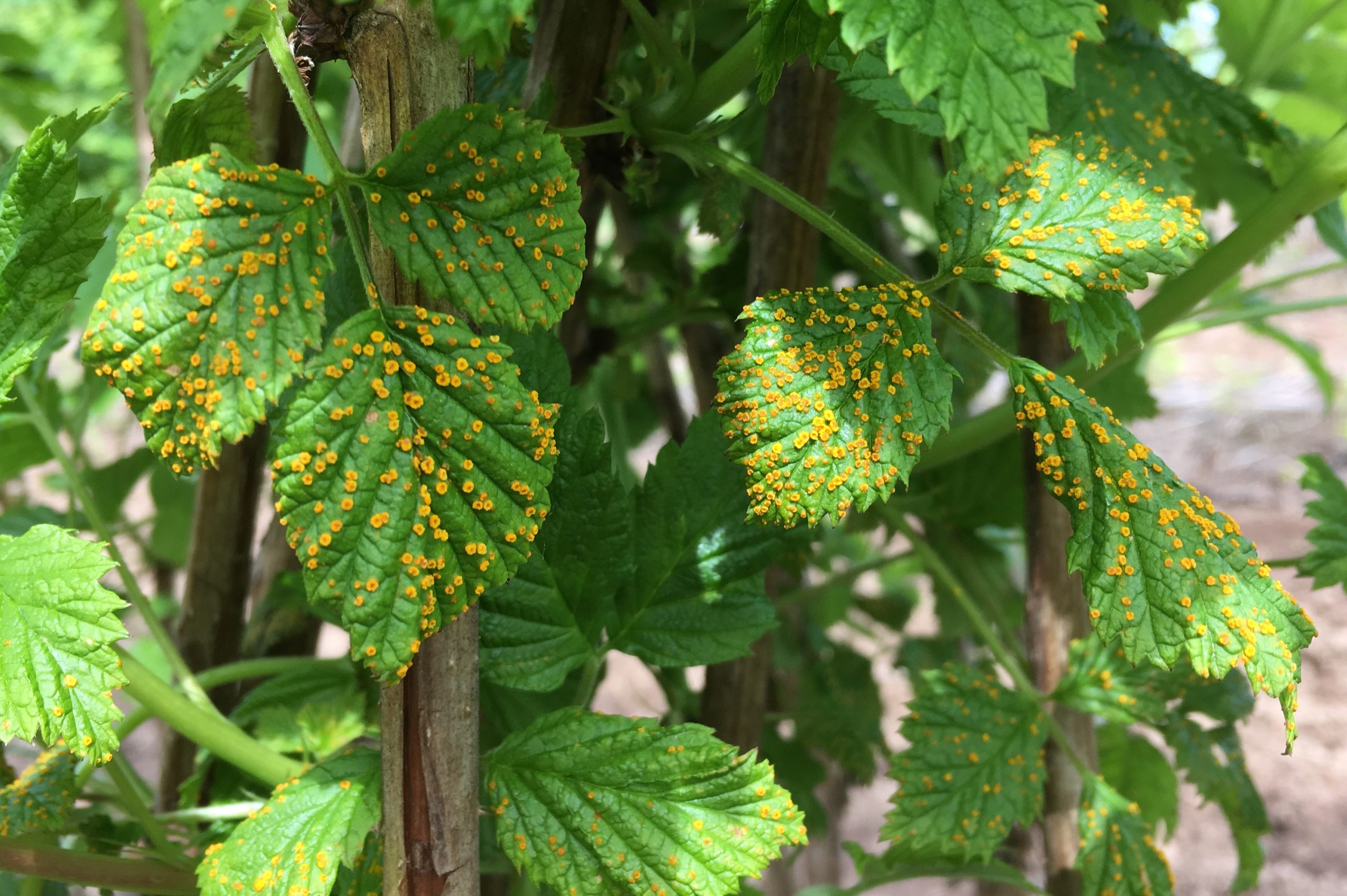growing cane fruit
Raspberries & BlackberriesRaspberries
Full sun is essential for sweet, well sized fruit. Raspberries prefer well-drained sandy soil. If the site is poorly drained, build raised beds 1′ high. Plant dormant, bare root canes from late winter to mid-spring 30″-36″ apart in rows 12″-18″ wide and 8′-10′ feet apart. Spread roots out and cover with no more than 2” of soil. Cut canes to 3-4 buds above ground level.
Soil moisture is crucial during the fruit ripening stage of growth, and in late summer and early fall when flower buds are forming for the following year’s crop. Irrigate if rainfall is insufficient. Overhead watering during fruit formation can lead to fruit rot; drip or soaker hose irrigation is preferred.
Summer bearing varieties, such as Cascade Delight, Lewis, Boyne, Meeker or Tulameen, grow new canes each summer (primocanes). The following summer, these canes (now called floricanes) flower and fruit. While these canes fruit, new primocanes emerge for next year’s crop. Fall bearing, or everbearing types, such as Vintage, Anne, or Fall Gold, bear fruit on the top half of this year’s primocanes in late summer and early fall. They overwinter and produce a second crop on the lower half of the canes the following June and July. If the canes are cut to the ground each fall, the late summer/early fall crop is larger and of higher quality.
Trellising, Pruning, and Training
Summer bearing raspberries need a robust trellis for year-round support whereas fall raspberries benefit from some support to keep canes upright during the growing season. A three-wire trellis is recommended: install a top wire at 54″ and two wires on either side of the post at 30″. Train canes between the lower two wires and tie to the top with twine or similar material when they reach that height.
On summer bearing varieties, remove floricanes any time after harvest. Tie 10-12 of the healthiest primocanes to the top trellis wire. On vigorous, established plantings of summer bearers, remove the first flush of primocanes by hoeing in mid-late April. Allow 10-12 of the second flush of primocanes to grow.
For two crops on fall bearing types, remove the top half of the cane after fruiting on 10%-20% of the strongest canes, leaving the lower half to fruit the following summer. Remove weaker canes by cutting them to the ground. The fall crop on most fall bearing varieties is superior, so most growers cut all the canes to the ground in late fall.
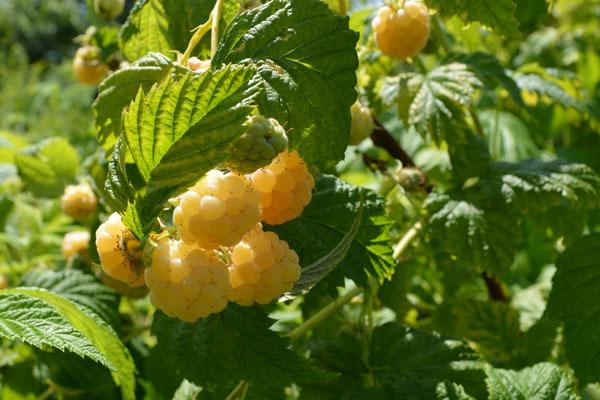
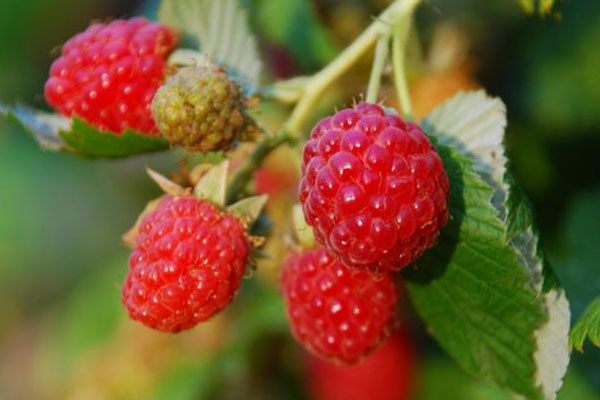
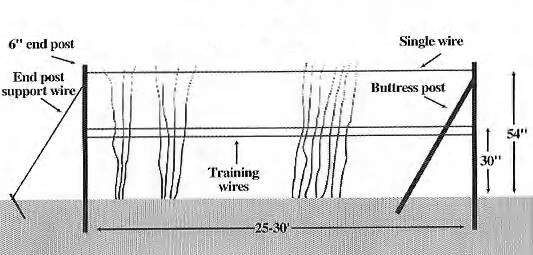
Blackberries
Blackberries are more tolerant of wet soil than raspberries but will grow and fruit best in well drained sites. They need full sun. Plant dormant canes late winter through mid-spring. Space the plants 4′-6′ apart, with the rows spaced 9′-10′ apart. All primocanes are allowed to grow each year. Blackberry primocanes emerge from a crown, and the roots do not run aggressively like raspberries.
Trellising and Training
Like summer bearing raspberries, blackberries fruit on second year canes. A trellis system is needed to support the fruiting canes. One recommended system is like raspberries, with a top wire at 5′ and a second wire 18″ lower. Floricanes are woven between the two wires as they grow, and primocanes are allowed to trail on the ground. Remove the old floricanes after harvest or in the spring and weave the old primocanes (now floricanes) through the trellis.
A word of caution when planting thornless blackberries. Bird distributed seedlings of thornless blackberries are not always thornless! To ensure your blackberry patch stays thornless, protect the berries from birds as they ripen.
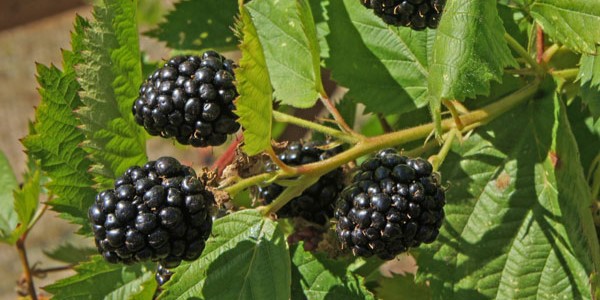
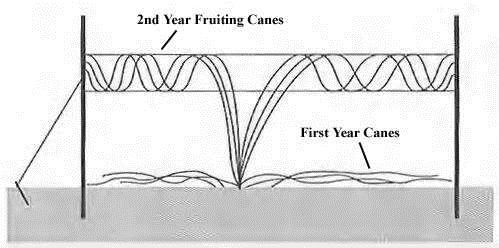
Pests and Diseases
Most common problem in raspberries is root rot caused by winter wet soils. Canes gradually die off and can easily be pulled from the soil. The only solution is to start a new bed of raspberries elsewhere in better drained soils or raised beds. Blackberries are more tolerant of winter wet soils than raspberries but can succumb to root rots if the soil is too wet.
Yellow rust is common in raspberries, especially in commercial raspberry growing areas. For the homeowner, removing and destroying foliage and fruited canes after harvest is the best control. Blackberries can also be infected with rust diseases. The invasive Himalayan blackberry and our native trailing blackberry are both susceptible and can carry the disease. They can cause defoliation, which can stunt the plants. Control by pruning fruiting canes after harvest and removing fallen foliage in the fall and destroying.
Another less common problem is a complex of viruses known collectively as Raspberry Bushy Dwarf Virus (RBDV). The main issue with an infection is that the berries become somewhat crumbly and not good for freezing, although flavor is still good. One characteristic symptom of RBDV is yellow growth on primocanes. The viruses are spread through pollen, so again, replanting in the same area may lead to infection of the new plants. Blackberries can also be infected by RBDV, although it is uncommon unless they are planted near infected raspberries.
Both raspberries and blackberries can be targeted by the Spotted Wing Drosophila fruit fly. This pest lays eggs on fruit just as it ripens. The eggs hatch and the larvae develop within the fruit. In the home garden, sanitation (removing and destroying infected fruit) plus trapping can be effective. The larva in the fruit is also killed by freezing and jam-making and is not harmful to consume.
